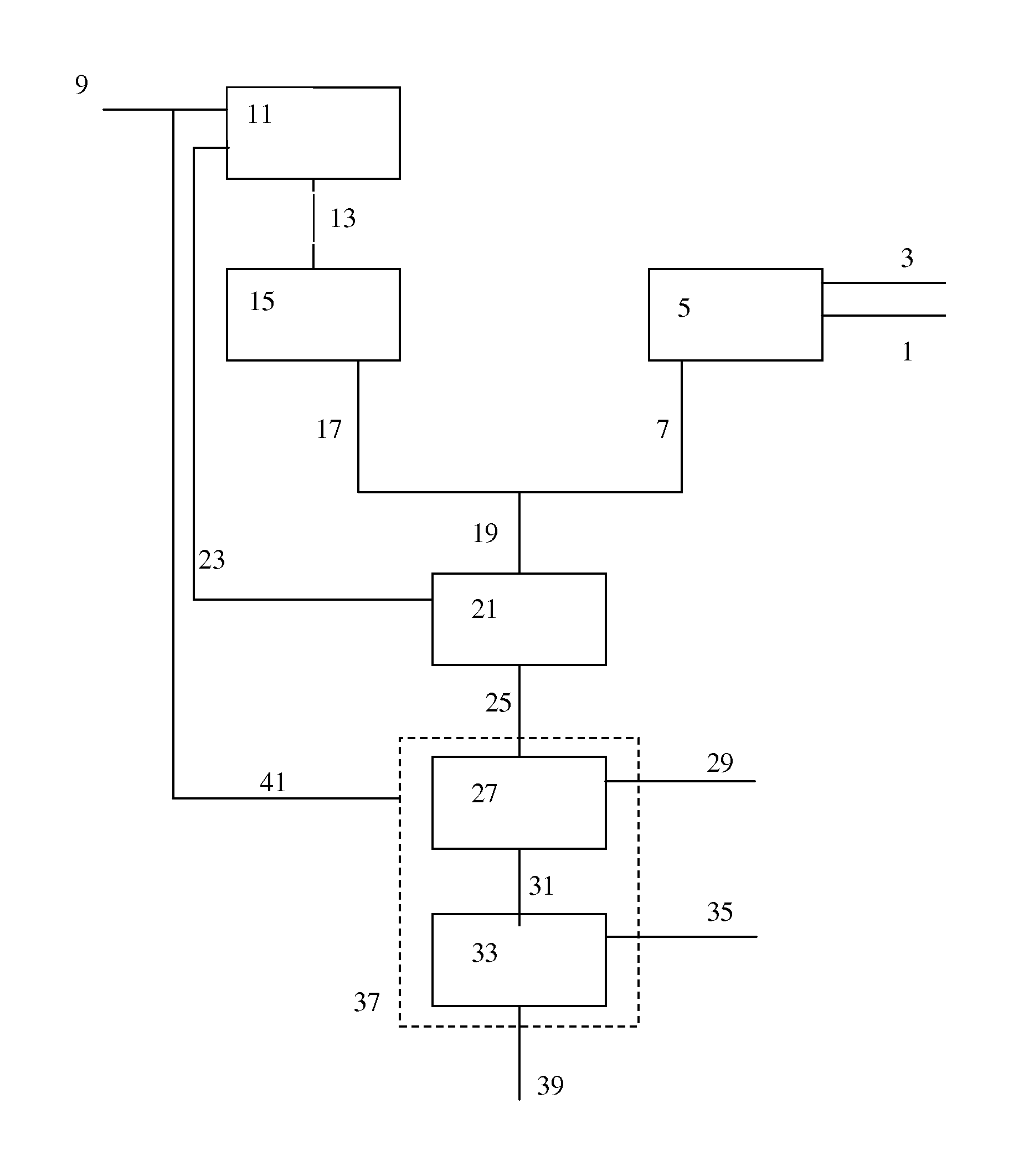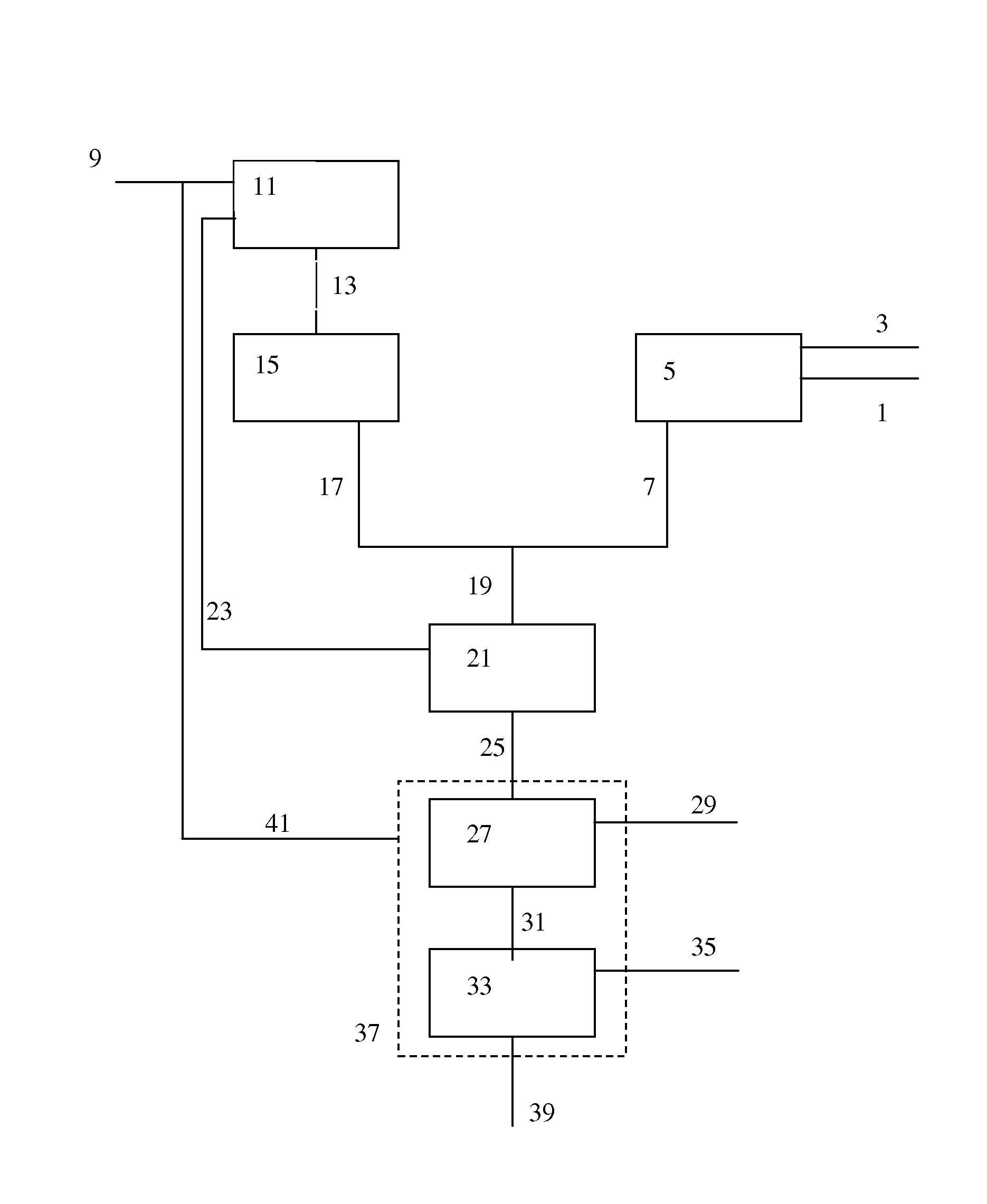Process for producing ethylene oxide
a technology of ethylene oxide and ethylene oxide, which is applied in the direction of liquid-gas reaction process, oxygen-containing compound preparation, organic chemistry, etc., can solve the problems of high endothermic conversion of ethane to ethylene, difficult to transport large volumes of natural gas from the source to the market, and inability to convert ethane to ethylene, etc., to achieve the effect of reducing the production of carbon dioxid
- Summary
- Abstract
- Description
- Claims
- Application Information
AI Technical Summary
Benefits of technology
Problems solved by technology
Method used
Image
Examples
example 1
[0159]In the Examples, several options of implementing the present invention are compared with comparative examples, by means of model calculations. As basis for Examples 1a to g, a model integrated OTO / ethane cracker process was taken. In Table 1, an overview is provided of the feed input and the calculated products.
[0160]Calculations were done using a Spyro based model for modelling of cracker operation combined with a proprietary model for modelling the OTO conversion. The key input to the models was as follows:
[0161]Steam to ethane ratio is 0.35 wt %. USC coil is used for the Spyro calculations. Calculated at a coil outlet pressure of 1.77 bar absolute, at 65% ethane conversion and a residence time of 0.24 seconds.
OTO Conversion:
[0162]MeOH 5012 t / d is fed to the OTO reactor together with 1384 t / d of recycled and superheated steam and 1775 t / d of recycled C4 stream. The model was calibrated on small-scale experiments conducted to determine product distributions for singl...
experiment 1a
Not According to the Invention
[0177]The methanol feed to the OTO process is synthesised from a mixture of SGP and SMR synthesis gas. 2949 ton / day of natural gas is required to produce sufficient methanol.
experiment 1b
Not According to the Invention
[0178]The methanol feed to the OTO process is synthesised from a mixture of part of the hydrogen ex. cracker and SGP synthesis gas. 2722 ton / day of natural gas is required produce sufficient methanol.
[0179]Furthermore, inert (N2, Ar and CH4) concentration in the feed to the methanol synthesis are reduced, compared to the levels seen in experiment 1a, due to dilution of the SGP synthesis gas with hydrogen obtained from the ethane cracker.
PUM
| Property | Measurement | Unit |
|---|---|---|
| molar ratio | aaaaa | aaaaa |
| mol % | aaaaa | aaaaa |
| molar ratio | aaaaa | aaaaa |
Abstract
Description
Claims
Application Information
 Login to View More
Login to View More - R&D
- Intellectual Property
- Life Sciences
- Materials
- Tech Scout
- Unparalleled Data Quality
- Higher Quality Content
- 60% Fewer Hallucinations
Browse by: Latest US Patents, China's latest patents, Technical Efficacy Thesaurus, Application Domain, Technology Topic, Popular Technical Reports.
© 2025 PatSnap. All rights reserved.Legal|Privacy policy|Modern Slavery Act Transparency Statement|Sitemap|About US| Contact US: help@patsnap.com


